
views
- To improve your cardio fitness and endurance, do aerobic exercises such as running, cycling, swimming, or interval training on a regular basis.
- Aim to exercise for at least 30 minutes at a time, 3 days per week. Work your way up to exercising 5 days per week for the best results.
- Benefits of cardio exercise include lower blood pressure, reduced risk of diabetes and heart disease, maintaining a healthy weight, and boosting your mood.
Take the stairs whenever possible.

Climbing stairs is a good way to add some cardio activity into your daily routine. Instead of taking the elevator at work, for example, walk up the stairs. Or, go up and down the stairs in your home a few times while you’re waiting for water to boil in the kitchen. Taking the stairs doesn’t have to count as an official cardio workout. Just think of it as a way to keep building your fitness whenever you have a chance. Stair machines at the gym are also a good way to improve your cardio fitness, if you do want to make stair climbing into your official daily workout.
Build up to 30 minutes of cardio 5 times a week.
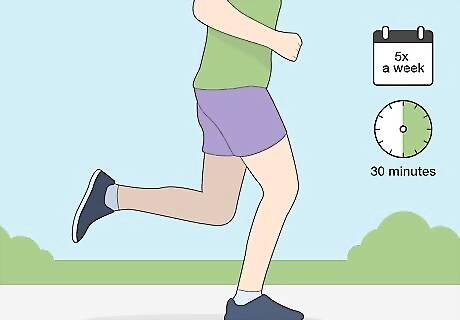
Experts recommend at least 150 minutes of cardio per week. Start with this as your goal, but don’t force it if you’re just beginning your workout journey. If it’s too hard at first to do this much cardio activity, ease into it by doing 30 minutes of aerobic activity 3 days a week instead. Adding any amount of exercise to your routine is certainly beneficial for your health, especially if you weren’t exercising very often before. Any amount of exercise is better than none at all! However, to noticeably improve your cardio fitness and endurance you’ll likely need to get at least 150 minutes of moderate aerobic exercise or 75 minutes of vigorous aerobic exercise per week. For example, if you do 30 minutes of cardio activity only once a week, you might not see as noticeable results as you would see if you did a 30-minute workout on each weekday.
Pick cardio activities you enjoy.
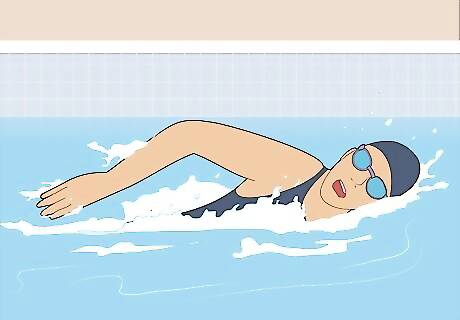
It’s easier to stick to an exercise routine if you enjoy your workouts. Select activities that match your lifestyle, personal preferences, and current fitness level. If you have any previous injuries, choose activities that you can do without hurting yourself. Examples of cardio activities are brisk walking, jogging, running, swimming, cycling, aerobics, playing tennis, hiking, stair climbing, rowing, and jumping rope. For example, if you haven’t worked out in years, it’s probably easier to start your new cardio fitness routine with something like brisk walking than it is by attempting to hike up a steep mountain right away.
Do a variety of cardio activities.
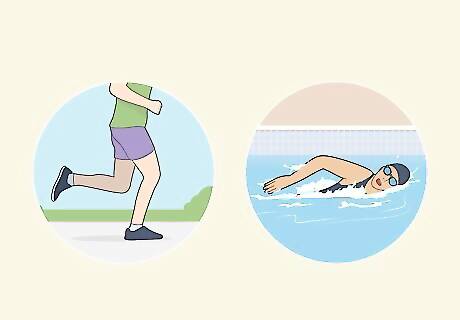
Changing up your routine helps prevent excessive joint and muscle stress. Incorporate at least 2-3 different cardio activities that use different muscles and movements into your new fitness routine to avoid pain. Choose 1 activity that mainly uses your legs and 1 activity that uses more of your upper body, for example. For instance, you could choose to run on some days and swim on others. If you have arthritis, aquatic activities like aquatic aerobics and swimming are good choices because they don’t stress your joints. EXPERT TIP Laila Ajani Laila Ajani Fitness Trainer Laila Ajani is a Fitness Trainer and founder of Push Personal Fitness, a personal training organization based in the San Francisco Bay Area. With over 10 years as a trainer and exercise specialist, Laila has expertise in competitive athletics (gymnastics, powerlifting, and tennis), personal training, distance running, and Olympic lifting. Laila is certified by the National Strength & Conditioning Association (NSCA), USA Powerlifting (USAPL), and she is a Corrective Exercise Specialist (CES). Laila Ajani Laila Ajani Fitness Trainer Do you feel bored with your cardio routine at the gym? Mix up your cardio exercises. To make your cardio routine more fun, spend 10 minutes each on the treadmill, bike, rowing machine, and elliptical. It'll be more fun than just doing 40 minutes on the same machine.
Switch between high- and low-impact activities.
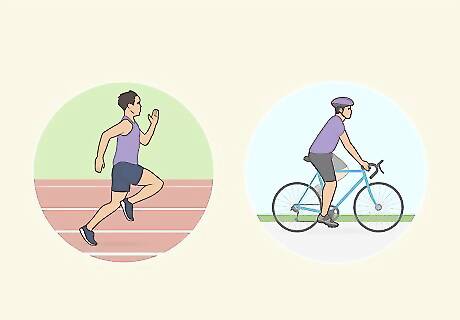
Allowing your body and muscles to recover prevents injuries. Do a high-impact activity like running one day, then do a low-impact cardio exercise like swimming the next time you work out. That way, you’re giving your knees, feet, and hips a break from pounding on the pavement. Other low-impact cardio activities are cycling, rowing, and rollerblading. Other high-impact cardio exercises are jogging, jumping jacks, and jump rope.
Do high-intensity interval training 2-3 times a week.
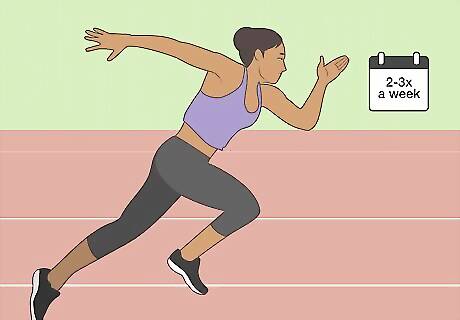
High-intensity interval workouts quickly boost your cardio fitness. For example, run, bike, row, or swim as fast as you can for 30 seconds, then do the activity at an easy pace for 30 seconds. Repeat the exercise in 30-second intervals of easy and hard paces for the duration of your workout. When 30-second intervals become too easy, step up the intervals to 60 seconds. You can also do distance intervals instead of time intervals. For instance, run as fast as you can for 1 lap around a track, then jog 1 lap slowly at an easy pace and repeat.
Start your workouts with a gentle warm-up.
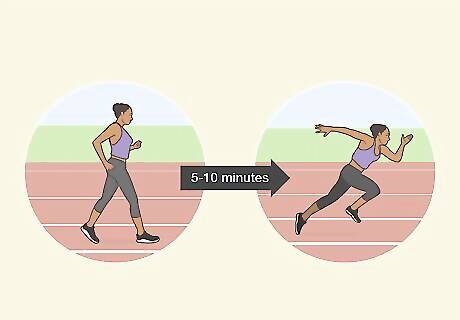
Warming up loosens your joints and gets your blood flowing. Do your chosen activity at a low intensity for about 5-10 minutes or longer before you start really pushing yourself. Gradually increase the intensity until you’re working out at your target intensity. For example, if you’re going on a run, start out at a slow jogging pace for 5 minutes, then gradually speed up for the next 5 minutes until you’re fully running.
Work out hard enough to challenge yourself.
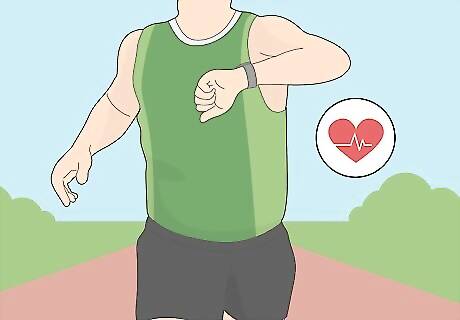
You have to challenge yourself to actually improve your cardio fitness. Work out hard enough that you feel your heart rate rise and the activity is difficult to do. To make sure you’re working out in the ideal aerobic zone, take your pulse manually, wear a device that monitors your heart rate, or use a workout machine that tells you your heart rate, like an elliptical or treadmill. Set a target heart rate with your healthcare provider or a qualified trainer. Your target heart rate will be the number of heartbeats per minute you’re trying to reach while performing your cardio exercises. Over time, you’ll start to notice that you need to do more intense physical activity to reach your target heart rate. For example, at first you might reach your target heart rate by going on short walks, but after a while, you might need to take a longer jog to reach the same heart rate. This means that your cardiovascular fitness is improving!
Increase the difficulty of workouts weekly.

When your workouts become easier, it’s time to ramp up the difficulty. Over time, your heart rate won’t rise as easily when you exercise, and you’ll need to do more intense activity to feel the same burn. This is how you know you’re improving your cardio fitness. When your typical workouts start to feel much easier, challenge yourself with more intense exercises or longer workout sessions. Try to gradually increase the amount of time or distance you run for by about 10-20% a week, for instance. Or, make your exercise harder in some way, such as briskly walking up a hill instead of across flat ground.
Talk to a doctor if you have health problems.

A physician can make recommendations about exercise. This is especially important if you have heart problems or high blood pressure. Let the doctor know that you want to begin a new cardio fitness regime. Ask them if they have any recommendations or warnings for you based on your medical history. This is also important if you have any previous muscle, bone, or joint injuries. The doctor may recommend that you avoid certain types of activities, such as high-impact activities, for example.


















Comments
0 comment